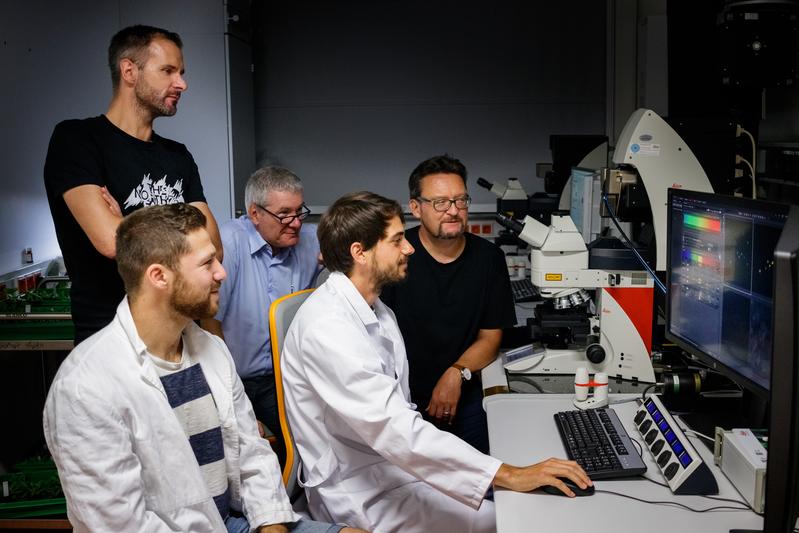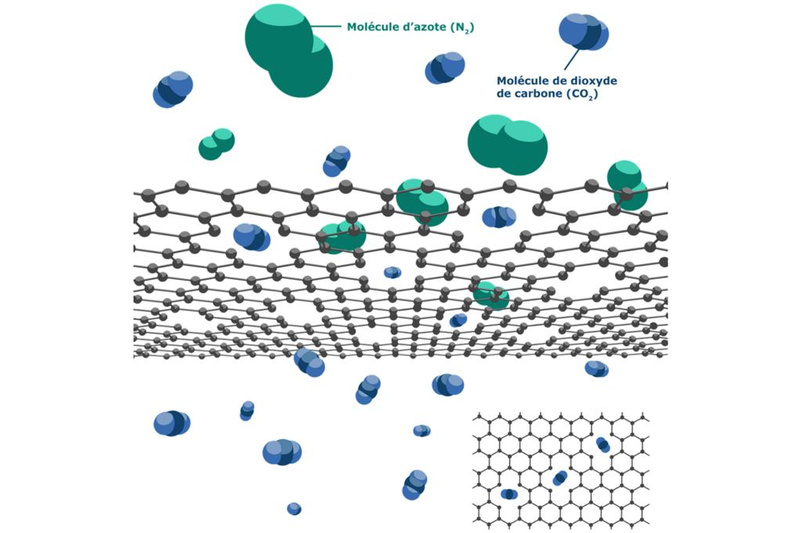

Daniel Lüdke shows his colleagues the results of the microscopic examination.
Photo: Philipp Niemeyer
As far back as Neanderthal times, bark containing salicylic acid was chewed to self-medicate; the first chemical extraction was in the 1820s, and an improved version has been marketed as Aspirin for over 120 years. But no-one understood how plants actually made it.
Then, 20 years ago researchers using the plant Arabidopsis thaliana discovered the first gene involved in salicylic acid synthesis. Ever since, countless groups have tried to identify the missing steps on the way to salicylic acid.
Dmitrij Rekhter and colleagues from the Department of Plant Biochemistry at the University of Göttingen found a way to investigate. They used special Arabidopsis plants isolated by Professor Zhang’s team at the University of British Columbia, which have extremely elevated levels of salicylic acid.
Then the researchers found that the precursor to salicylic acid accumulates in these plants if a gene of previously unknown function (PBS3) is removed. The team in Göttingen was therefore able to deduce the action of the gene product.
As first author Rekhter explains, “PBS3 attaches isochorismic acid to glutamic acid resulting in the formation of the previously unknown compound isochorismate-9-glutamate. This highly unstable substance decomposes spontaneously into salicylic acid and by-product.”
Solving the riddle of how plants biosynthesise salicylic acid was a joint effort of the teams of Professor Ivo Feußner, Dr Marcel Wiermer and Professor Volker Lipka at the University of Göttingen together with the team of Professor Yuelin Zhang at the University of British Columbia, within the International Research Training Group “PRoTECT”.
Furthermore, it looks like this pathway applies across the plant kingdom. Feußner from the Department of Plant Biochemistry at the University of Göttingen says, “This research not only increases our understanding of how plants synthesise this hormone, but also opens up new opportunities to breed crops that are more resistant to disease. The important role of salicylic acid for plants in their battle against disease make these findings of fundamental importance for research areas such as plant immunity and therefore also food production.”
Professor Ivo Feußner
University of Göttingen
Department for Plant Biochemistry
Justus-von-Liebig-Weg 11
37077 Göttingen, Germany
Phone: +49 551 39-25743
Email: ifeussn@uni-goettingen.de
Dr Marcel Wiermer
University of Göttingen
Research Group Molecular Biology of Plant-Microbe Interactions
Julia-Lermontowa-Weg 3
37077 Göttingen, Germany
Phone: +49 551 39-177846
Email: wiermer@uni-goettingen.de
Dmitrij Rekhter et al. Isochorismate-derived biosynthesis of the plant stress hormone salicylic acid. Science (2019). https://science.sciencemag.org/content/365/6452/498.abstract.












